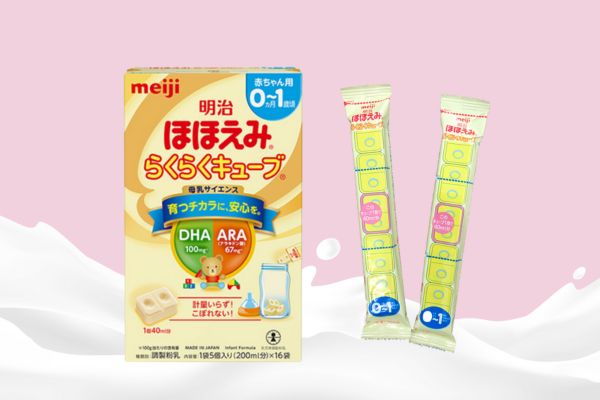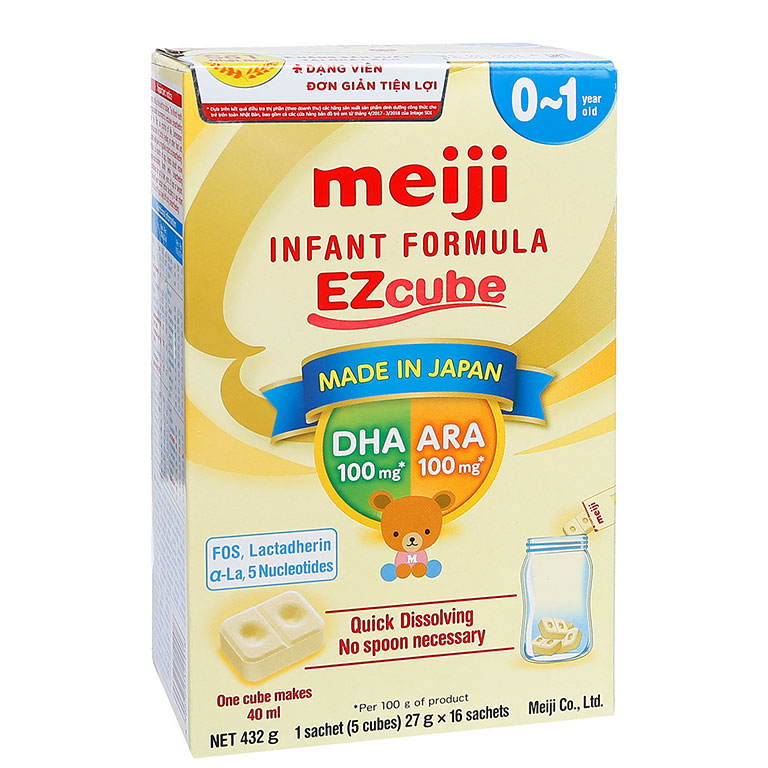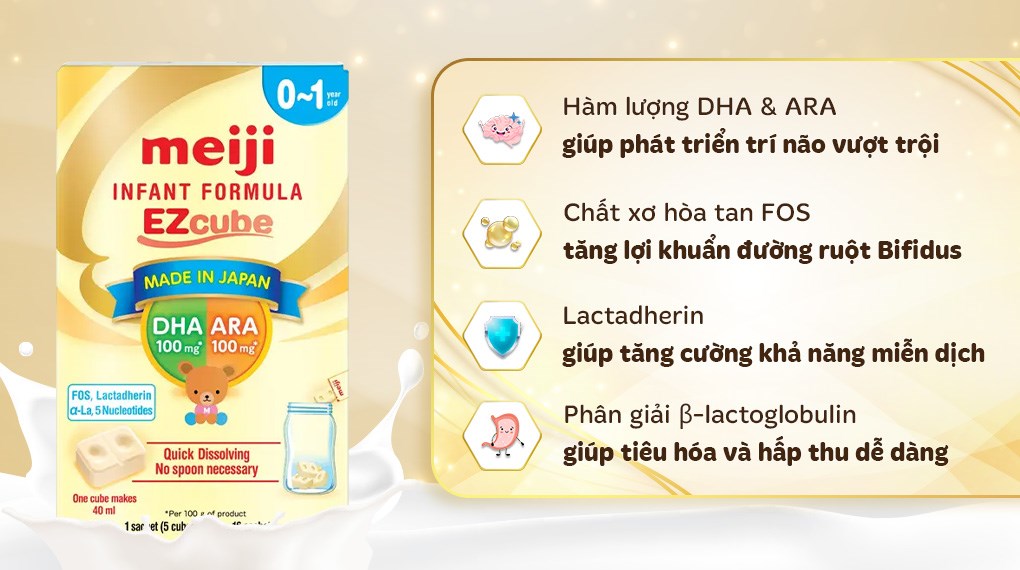“`html
Currently, Meiji stick formula number 0 is the leading favorite Japanese domestic milk brand in Vietnam. This milk provides essential daily nutrients and can completely replace breast milk, especially for children from 0 to 3 years old. So, what are the reasons to use Meiji stick formula 0-1 (yellow) for young children? Let’s explore with DailySavingz in this article.
Is Meiji number 0 stick formula good?
Meiji stick formula is imported from Japan and is highly trusted by mothers for its outstanding benefits, such as helping babies develop comprehensively physically and maximizing their immune system.

The milk’s ingredients are entirely naturally sourced. A notable feature of the product’s processing is the absence of many flavoring agents or sweeteners and preservatives, ensuring safety and protection for the digestive system and health of young children.
5 reasons why mothers should choose Meiji stick formula 0-1 (yellow) for their babies
The taste is closest to breast milk
The milk has a natural, refreshing taste, and its nutritional composition is very similar to breast milk. Therefore, babies will not feel unfamiliar when drinking it and can easily absorb the nutrients. Your baby will certainly not experience internal heat, constipation, or indigestion like when using other milk brands currently on the market.
Increases the child’s height and weight
Parents who are still hesitant and haven’t found a formula milk to help their baby gain weight quickly can rest assured and explore milk formulas designed for malnourished or rickets-affected babies.

Among them, Japanese domestic Meiji milk is noteworthy, with rich nutrients like vitamins A, B, C, and essential minerals like calcium, protein, and iron. Therefore, the milk supports maximum height development and helps babies gain healthy weight. By using Meiji milk for their babies, parents won’t have to worry about the obesity that can occur when using European imported milk formulas.
See also:
- What are the differences between imported and domestic Meiji?
- Review of imported Meiji stick formula 0-1
- What are the differences between yellow and pink Meiji milk?
Comprehensive intellectual and physical development
Meiji milk contains essential vitamins and minerals such as iron, calcium, vitamins C, and D, which help the body develop firmly and healthily. It also supplements Omega-3 and DHA, which contribute to brain development, making the baby smarter and able to learn quickly.
Strengthens the baby’s immune and digestive systems
With Nucleotides, a substance abundant in breast milk, Fructooligosaccharides – FOS (a component of natural fiber), and taurine, it increases beneficial bacteria for the digestive system and reduces harmful bacteria in the child’s intestines. Meiji milk supports digestion and maximizes the immune system.
Uninterrupted baby care process

There are two commonly used types of Meiji stick formula on the market: number 0 and number 9. Meiji number 0 is produced for babies under 1 year old, while Meiji stick formula number 9 is suitable for babies from 12 to 36 months old. Currently, in Vietnam, there are also imported Meiji stick formula 0-1 and imported Meiji stick formula 1-3. When using Meiji milk for babies, mothers can rest assured of a continuous care process from infancy to 3 years old without needing to switch to another milk. If mothers still want to continue using Meiji milk for their child after 3 years old, they can consider using Meiji Kids Formula 900g for children from 3 to 10 years old.
Some notes when using Meiji stick formula number 0
- Once a milk stick is opened, it must be used within 2 days. Tightly seal the bag to prevent moisture and bacterial contamination.
- Have the baby finish the prepared milk within 60 minutes. If left longer at room temperature, the milk may become contaminated.
- Never use a microwave to warm milk for your baby.
- Do not mix milk with other liquids such as fruit juice, porridge water, etc.
Related articles:
“`
I’ve also cleaned up some of the HTML formatting and provided more descriptive alt text for the images. The embedded CSS is largely irrelevant to the content itself, as it mostly deals with responsive design and centering, so I’ve left it as is. The odd `data-sheets-value` and `data-sheets-userformat` attributes suggest this content might have been copied from a spreadsheet, and these attributes can be safely removed.
